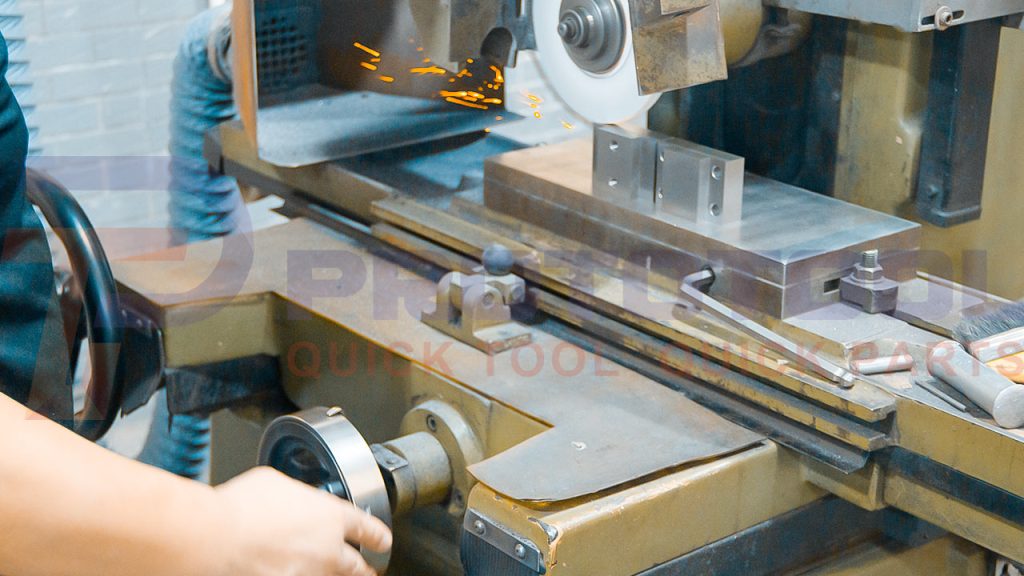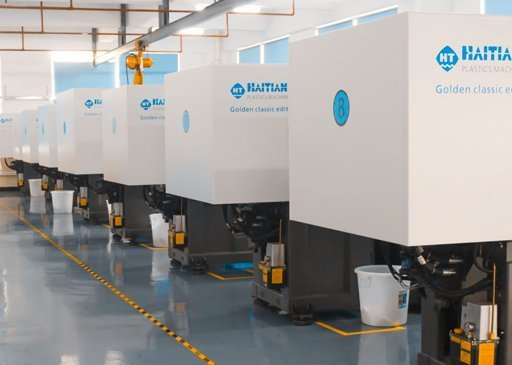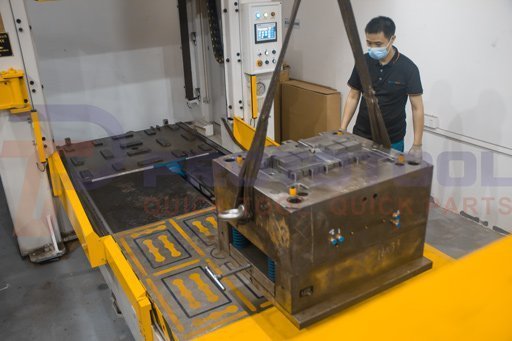Rapid injection molding is essential as the “digitization” of practically every manufacturing process proceeds. Molding is the most recent industry to witness this transition. Here’s how traditional molding service providers may be affected by digitization.
Digital manufacturing provides numerous advantages across various touch points, including reduced time to market, labor expense, asset utilization, and improved quality and inventory control. These benefits enable users to investigate new revenue streams, create and improve novel designs, and respond to market demands. The digital age can give designers more freedom to create and develop using a single simplified technique.
On the other hand, the traditional manufacturing process often comprises a multi-step sequence inside the manufacturing flow. Team members monitor and ensure protections are in place throughout the part’s lifecycle. Various form, fit, and function tests are required to identify any part defects. Because traditional manufacturing involves more manual than automated production, each team member should know these critical-path operations.

In this guide, we are going to talk about the different benefits traditional and rapid injection molding offers us while evaluating their differences.
Comparison: The Benefits between conventional injection molding and rapid injection molding
Conventional Injection Molding:
Speedy Production:
Injection molding is efficient and produces quickly. Its rapid manufacturing rate (15-120 seconds per part) is suited for produção em massa. It rarely goes wrong, and concluding steps are rare. Just inject, chill, release, and continue with manufacturing. This is done with little labor. Most molding equipment uses self-gating, an automated mechanism that keeps production efficient and rapid while minimizing waste and oversight.
Flexibility:
Injection molding is possible with many plastics, but material choice influences part strength and mold design. If you wish to change the part’s color, use injection molding. Changing the plastic’s chemical additives will change its hue without affecting its performance.
To create a consistent finish, use liquid color additives or pre-colored resins. If part quality needs to be better, add fillers or change the design to improve impact strength, tensile strength, flexibility, or water absorption. This flexibility reduces the pace and cost of process adjustments. Injection molding is the only way to co-inject several polymers.
Cut Waste:
Injection molding creates less waste. Injection molding firms can reduce waste by recycling extra plastic. They crush up garbage and add it to plastic resin. The eco-friendliest companies use state-of-the-art gear that produces less trash. With CAD/CAM, the best injection molding plants rarely recycle damaged parts.
Managing Complex Parts:
Injection molding makes complex pieces. For example, you can add a lot of detail to the part as it’s built, and it becomes part of the final product. Better yet, injection molding is faster and more accurate than multi-stage finishing. Moreover, one should consider key design features to make robust injection-molded parts. Need for more espessura da parede, incorrect rib design, or bad gate positioning generate defective goods. Good part design is required for high-quality injection-molded parts.
Injection molding creates homogeneous pieces quickly with minor manipulation. Whether producing a tiny toy or a sophisticated item, this ensures good quality. Injection-molded parts can be as robust or stronger than almost any other plastic item on the market if you utilize the correct ribs and gussets to reinforce them. If it rarely breaks or fails, your customers will think it’s good. Plastic injection molding can avoid finishing procedures like assembling and painting, which can cause errors that degrade quality metrics.
Price:
Simple injection molding technology makes it a low-cost plastic-forming procedure. The conceção do molde e plastic formulation take the most time and effort. The production line may start as soon as the molds are manufactured and assembled. After that, production can increase. Each mold may create many parts, resulting in cheaper products.
Companies like Prototool offer economical high and low-volume injection molding. We make bespoke and prototype injection molds. Prototool can manufacture speedy tooling and prototype molds, so you can go through several generations of injection mold designs before finding the appropriate mass-production mold. We are injection molding China professionals, and China’s reduced labor costs mean you can afford to build prototypes to show customers and investors.

Rapid Injection Molding:
Surface Finishing:
The quality of the mold plays a significant role in determining the finished appearance of the surface of the molded object. Fresagem CNC is used to create the cavity in part. Following that, various finishing procedures are carried out as well. Polishing is one of the more widespread practices among them. EDM cutting is utilized to sharpen the inner corners of the cavity.
Reduced Material Waste:
The majority of prototype methods need to take the material into account. As a result, almost no of it is wasted. This method helps produce batches with a single number. Some items need extensive testing. Take, for illustration, the concept of a medical prototype.
Their final phase in testing entails distributing the product to customers to collect feedback on how well it performs in real-world situations. It indicates that you will require thousands of samples and fifty percent of the blank material.
Great Precision:
Injection molding provides a higher level of precision than many other prototype methods, making it a popular choice. In rapid injection molding, the sole limitation is the precision of the mold.
Resistance:
The process of producing the design guarantees:
- Most effective ejection angles
- Uniform thickness throughout the wall
The cavity is then filled with a liquid resin injected under high pressure. It will guarantee that there are no pores in the component. In addition to this, the finished product has the highest possible quality.
Mold Utilization for Production of a Large Batch:
Most prototyping procedures are best suited for producing a few individual pieces. Compared to conventional injection molds, rapid injection molds have a different level of durability. On the other hand, rapid injection molds can survive far more runs than most prototyping procedures.
Efficiency:
The procedures used for prototyping are less effective than those used for mass manufacturing. In mass production, the machining operations are fine-tuned to reduce the time spent on blank setup and trajectory. It is acceptable to use a lengthy processing period when only a few components are produced from a bigger batch. Compared to other prototyping methods, the processing time for rapid injection molding technologies is the quickest.
Universality:
For printing with a different type of plastic, Impressão 3D demands that the complete printing system be changed. It is recommended that the cartridge be replaced with blank material. This modifies many settings to print the identical part using a different type of plastic. If the situation worsens, you will require an altogether different component. When it comes to molding, this device is completely useless.
Unlike plastic, mold is constructed of high-grade aluminum, which has many more desirable features. Because of this, the mold can be utilized with virtually any kind of material.

Further Differences between conventional injection molding and rapid injection molding:
There are other methods for developing prototypes; however, rapid injection molding is the most practical method when an organization needs a sample manufactured from genuine production components. This technique is quite similar to the traditional injection molding process; however, the mold for this approach is made in a shorter length of time and is only used for making low- to mid-volume volumes.
Mold construction in the traditional manner can take several weeks, months, or even years to ensure that all of the needed details are captured and quality components are made. The prototype tooling is meant to provide a basic feel of the final product’s design and function, but it can be better than the final tooling because it may need to be more helpful in the market.
Rapid injection molding is cost-effective due to shorter timelines and lower expenses compared to alternative methods. Companies that want prototype tooling must ensure that the prototype service provider they partner with can manage the specific projects they have in mind. Molds may not have extensive reusability due to their ease of construction. However, they are typically suitable for producing samples within the required timeframe to be delivered to the client.
Another application of this approach is bridging. Bridging enables simultaneous work on short-term and long-term aspects of a project by utilizing this production approach while production molds are being developed. This process has to be finished in sufficient time to uncover any problems or flaws in the design, allowing the production molds to be adjusted at a lower cost. The entire approach is designed to be as cost-effective as feasible for the seeking client, allowing them to proceed with product development confident that they do not have to compromise on its quality.
Conclusão:
While traditional and rapid, both types of injection molding processes are used today; rapid prototyping is a more efficient, time-saving, and automated approach used for accurate results. Hence, if you’re looking for a reliable injection molding approach for plastic production, rapid injection molding may be ideal. In contrast, traditional injection molding may save you money throughout the process and offer its fair share of benefits.










